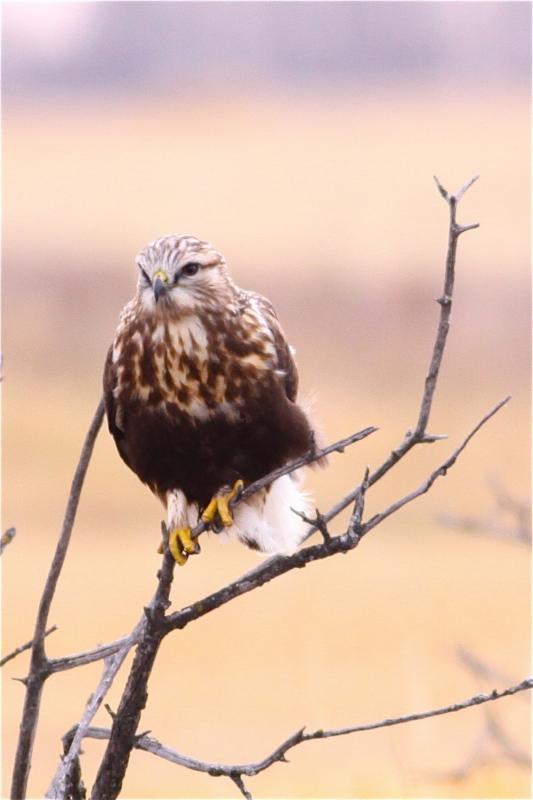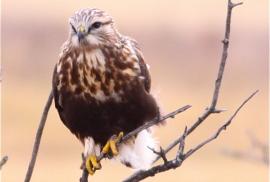Guide to Boreal Birds
Overview
This large hawk often hovers above its prey like a kestrel. Lemmings, other rodents, and birds are its main sources of food during the breeding season. The number of eggs laid by the Rough-leg, like the Snowy Owl, depends on the food supply, with larger clutches occurring in years when lemmings are abundant. At a distance this hawk can be identified by its habit of hovering and by the way it perches: balancing precariously on the most slender twigs at the top of a tree. On the wintering grounds, where it takes larger rodents and upland birds, it can be strikingly tame, probably because it encounters few humans in the Far North.
Description
19-24" (48-61 cm). W. 4' 4" (1.3 m). A large, long-winged hawk that often hovers. Tail white at base with a dark terminal band. Light-phase adult has sandy-brown head and neck, blackish belly, and dark "wrist" marks on underside of wing. All-dark forms can usually be identified by underwing and tail pattern.
Voice
Loud or soft whistles, often in a descending scale.
Nesting
2-7 white eggs, speckled with brown and black, in a nest of moss and sticks placed on a cliff or rocky outcropping on the tundra.
Habitat
Tundra; winters on open plains, agricultural areas, and marshes.
Range/Migration
Breeds in Aleutians and northern Alaska east to Baffin Island, and south to northern Manitoba and Newfoundland. Winters from southern Canada and across United States irregularly south to California, Texas, and Virginia. Also in Eurasia.



